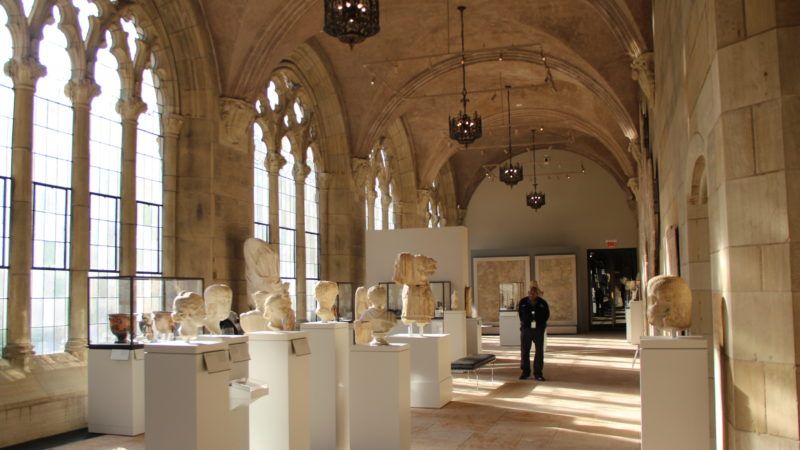Yale Will Eliminate a Beloved Introductory Art Class for Being Too White, Male, and Western
"It's a disservice to undergrads," said one student.

Enrollment has swelled for Yale University's introductory art history course, which covers "the Renaissance to the present." That's because the school plans to eliminate the popular class after the spring.
According to The Yale Daily News, the art department has decided that the class might make some students uncomfortable due to the "overwhelming" whiteness, maleness, and straightness of the artists who comprise the Western canon (though that last label may be dubious). Indeed, the focus on Western art is "problematic," course instructor Tim Barringer told the student newspaper.
"I want all Yale students (and all residents of New Haven who can enter our museums freely) to have access to and to feel confident analyzing and enjoying the core works of the western tradition," said Barringer. "But I don't mistake a history of European painting for the history of all art in all places."
In its final iteration, the course will "consider art in relation to questions of gender, class and race and discuss its involvement with Western capitalism," according to the latest syllabus. Art's relationship to climate change will also be a "key theme."
"I'm really looking forward to seeing what works the students come up with to counteract or undermine my own narratives," said Barringer.
Art students who wish to master the Western canon will still find plenty of other courses that satisfy their interests. But the removal of the introductory course makes it difficult for non-majors with a casual interest in the subject to study it.
"My biggest critique of the decision is that it's a disservice to undergrads," one student, Mahlon Sorensen, told The Yale Daily News. "If you get rid of that one, all-encompassing course, then to understand the Western canon of art, students are going to have to take multiple art history courses. Which is all well and good for the art history major, but it sucks for the rest of us."
It has become more common in recent years for small cabals of students to rebel against liberal arts curricula that they feel are too focused on Western artists, authors, and thinkers. Students at Reed College, for instance, successfully pressured educators to disband an introductory humanities course. In that case, the activists demanded that all European texts be removed and replaced by non-European books as a form of reparations "for Humanities 110's history of erasing the histories of people of color, especially black people." Yale's art department seems to be changing with the times.
It's good to include more perspectives and to ensure that a liberal arts education is not excessively focused on Europe. But diversity by addition is vastly preferable to diversity by subtraction. When a university eliminates an introductory art class because a tiny number of ideologues object to the whiteness and maleness of it all, it feels like they are declining to teach history because some people don't like what happened. The West's outsized influence on the events of the last several centuries may very well be problematic, but that doesn't mean it isn't real.
